By Lottie Armitage
When you think about your favourite book growing up, it’s likely that the book was relatable to you. The main character might have had similar experiences to the ones you lived through – a similar family, the same cultural background, shared hobbies and fears. They might have looked like you. They might have even shared your name, or had friends whose names were familiar. They might have been a doctor, or an astronaut, or an explorer. The message of these picture books is clear: here are the things you can do; here are the things you can be.
The secondary message they are sending is one adults might not pick up on, but one children subconsciously latch onto. Here are the things you can do and be – provided you look like me. With this in mind, consider how an overwhelming 80% of UK children’s books published in 2021 did not feature any characters from a minority ethnic group (CLPE, 2022). Consider how, in the same survey, the percentage of children’s books with a non-white main character was found to be 9%. Consider how – using the example of a story about an astronaut – less than one in ten picture books would show their readers a non-white person setting foot on the moon.
Some of these books might show a supportive friend from a minority ethnic background, or they might use only animal characters. But the main character, the intended reader-insert for children to project their hopes and dreams onto, is rarely visibly diverse. Even where the character is an animal this becomes an issue: on a visit to the library, I come across Leo the lion, Emily the elephant and Brian the bear, and am reminded how many of my classmates had names deemed strange or unpronounceable. I wonder if their peers and teachers would have had such difficulty saying their names if they’d grown up associating them with beloved characters. How can we accept children being teased for their names when it’s perfectly normal, apparently, for a character to be called ‘Winnie the Pooh’?
A lack of diverse role models in picture books has led to what Ebony Elizabeth Thomas, a well-respected researcher of children’s literature, has termed ‘the imagination gap’ (Thomas, 2016). It’s obviously important for all children to be able to empathise with those who are different from them, but this comes at a later stage of imagination development – the first stage is learning to think about your own opportunities. Thomas has noticed that children from minority ethnic backgrounds can fall behind in skills such as creative writing, because they are not prompted to exercise their imagination by picture book representation during this crucial early stage. Of course, fewer writers of colour leads to less representation in the mainstream. Publishers instead push their white authors to include a nonwhite side character for sometimes problematic last-ditch diversity. The resulting lack of authentic role models brings the issue full circle.
To break the cycle and bridge the imagination gap, publishers must ensure that their output of picture books reflects the diverse nature of modern British society. For context, 18% of those who completed the 2021 UK Census recorded their ethnicity as other than white – already double the 9% of children’s books featuring a non-white protagonist, and set to increase (Census, 2021). The solution is to platform writers and illustrators from diverse backgrounds, allowing for heartfelt and accessible celebrations of culture. From befriending a dinosaur to braving the dentist’s chair, no experience should be off-limits for any child’s imagination.
Sources
CLPE Reflecting Realities – Survey of Ethnic Representation within UK Children’s Literature 2017-2022 (November 2022). https://clpe.org.uk/research/clpe-reflecting-realities-survey-ethnic-representation-within-uk-childrens-literature-2017#:~:text=Annual%20reporting%20shows%20an%20increase,low%20at%209%25%20in%202021.
Ebony Thomas. ‘Research & Policy: Stories “Still” Matter: Rethinking the Role of Diverse Children’s Literature Today.’ Language Arts (November 2016). https://www.jstor.org/stable/44809887
UK Government – Ethnicity Facts and Figures (2021). https://www.ethnicity-facts-figures.service.gov.uk/#:~:text=Government%20data%20about%20the%20UK’s,group%20(2021%20Census%20data).

